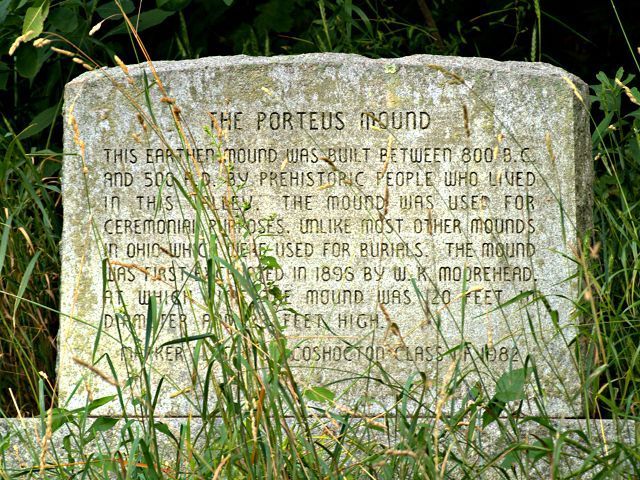Ohio is home to mounds built by prehistoric people who once lived here
Ohio is absolutely packed with interesting history, and nowhere is that more evident than among the rolling hills of Coshocton County. More than a century ago it was estimated that throughout Ohio there were more than 10,000 mounds built by ancient cultures such as the Adena or Hopewell people. Modern historians think that number is lower but that there are still an extraordinary number of Indian mounds.
William C. Mills, a curator for what is today known as the Ohio History Connection, documented about 3,500 Indian mounds throughout Ohio in his 1914 history atlas, 62 of which were in Coshocton County. Most of these mounds were clustered in Newcastle Township, but many more were found throughout the rest of the county as well. This number also did not include another 21 small earthen circles that the Adena people used as enclosures around their settlements.
So what remains today? According to Brad Lepper of the Ohio History Connection, The Ohio Archaeological Inventory currently lists around 2,000 mounds, but it is not known how many of these survive intact. Preserving ancient Indian mounds has proven to be quite a challenge over the last century. Smaller mounds have succumbed to erosion, and many more have been excavated or plowed away by farmers to make room for crops.
Local experts say that today there are 14 Indian mounds left in Coshocton County, but potentially new mounds are reported and investigated each year. Some of these discoveries are simply the location where a mound once sat. Even though the mound might be gone, the area where it stood is often rich with archaeological finds like stone tools, charcoal, pottery, jewelry and more. If a potential mound is no longer visible, archaeologists can still use tools like magneto meters and ground penetrating radar to study what remains.
For the most part mounds throughout Ohio including those in Coshocton County were built buy one of several ancient Indian cultures, the most notable of which are the Adena and Hopewell peoples. According to Lepper, The mounds were built using very simple technology: pointed sticks, shell hoes and baskets. They would dig up the earth, scrape it into baskets and carry those baskets on their backs over and over again until the mound was finished.
So what were these mounds used for? They had a variety of different purposes, and those purposes sometimes changed from one culture to the next. It is believed that ancient Native Americans formed smaller social groups or clans within larger tribes, and each clan was responsible for its own traditions.
Conical mounds make up the majority of Indian mounds throughout Ohio and are often burial mounds, but a few clans built ceremonial conical mounds. Others, like the Great Circle Mound in Newark, were purely ceremonial. Large mounds with flat tops were often temple sites or the spot on which the clans leader built his home. Then you have mounds like the Great Serpent Mound, which are believed to be homages to spirits or deities that the moundbuilders believed in.
Finally, a small number of earthworks were defensive structures, earthen walls meant to protect villages. Ironically, if youve ever visited the Fort Ancient Earthworks in Southern Ohio, youll find this mound system is not actually a fort as the name would have you believe. As Lepper notes, It [Fort Ancient] is a Hopewell ceremonial earthwork that early investigators mistakenly believed was a fort.
The most prominent mound in Coshocton County today is the Porteus Mound. This mound is approximately 20 feet tall and was originally part of a larger ceremonial complex that featured another smaller mound. At one time there was also a burial ground between the larger and smaller Porteus Mounds, but today youll find a cornfield where the burial ground once was.
Near the Porteus Mound is a stone marker that reads: This earthen mound was built between 800 B.C. and 500 A.D. by prehistoric people who lived in this valley. The mound was used for ceremonial purposes, unlike most other mounds in Ohio, which were used for burials. The mound was first excavated in 1896 by W.K. Moorehead at which time the mound was 120 feet in diameter and 23 feet high.
The marker doesnt say what was found during that initial excavation, but according to the original state survey of the Porteus Mound, things like small bones, ceremonial trinkets, spear heads and pottery fragments were found.
Today you can drive past the Porteus Mound by turning left off of state Route 83 onto South Second Street, south of Coshocton. Its not too far off of the main road. Youll round a bend, and then the mound will come into view. If youre ever near the city of Coshocton, it is worth it to swing by and see this prehistoric feat.

